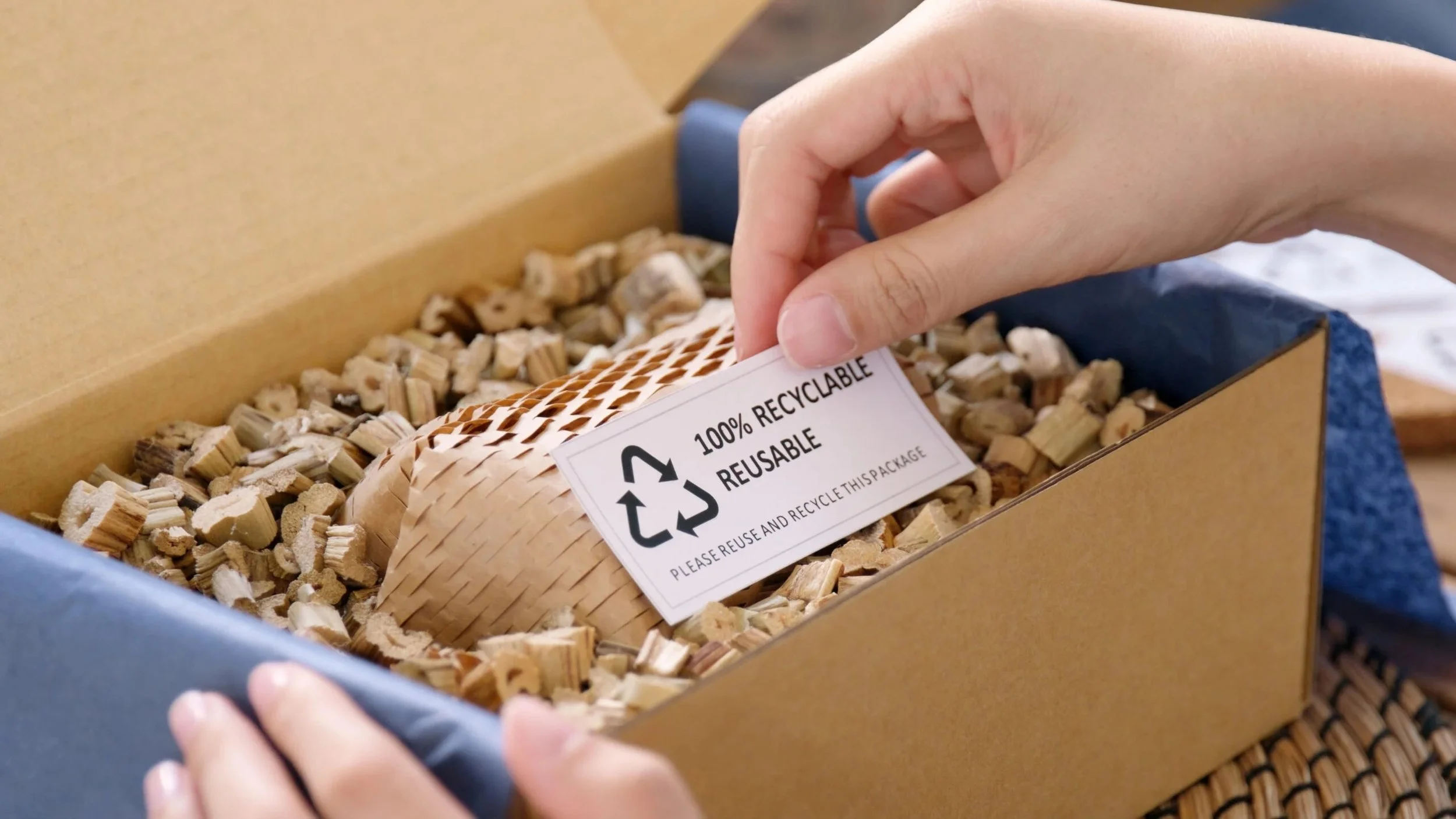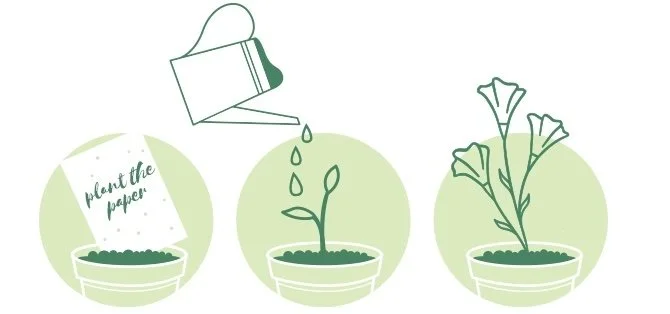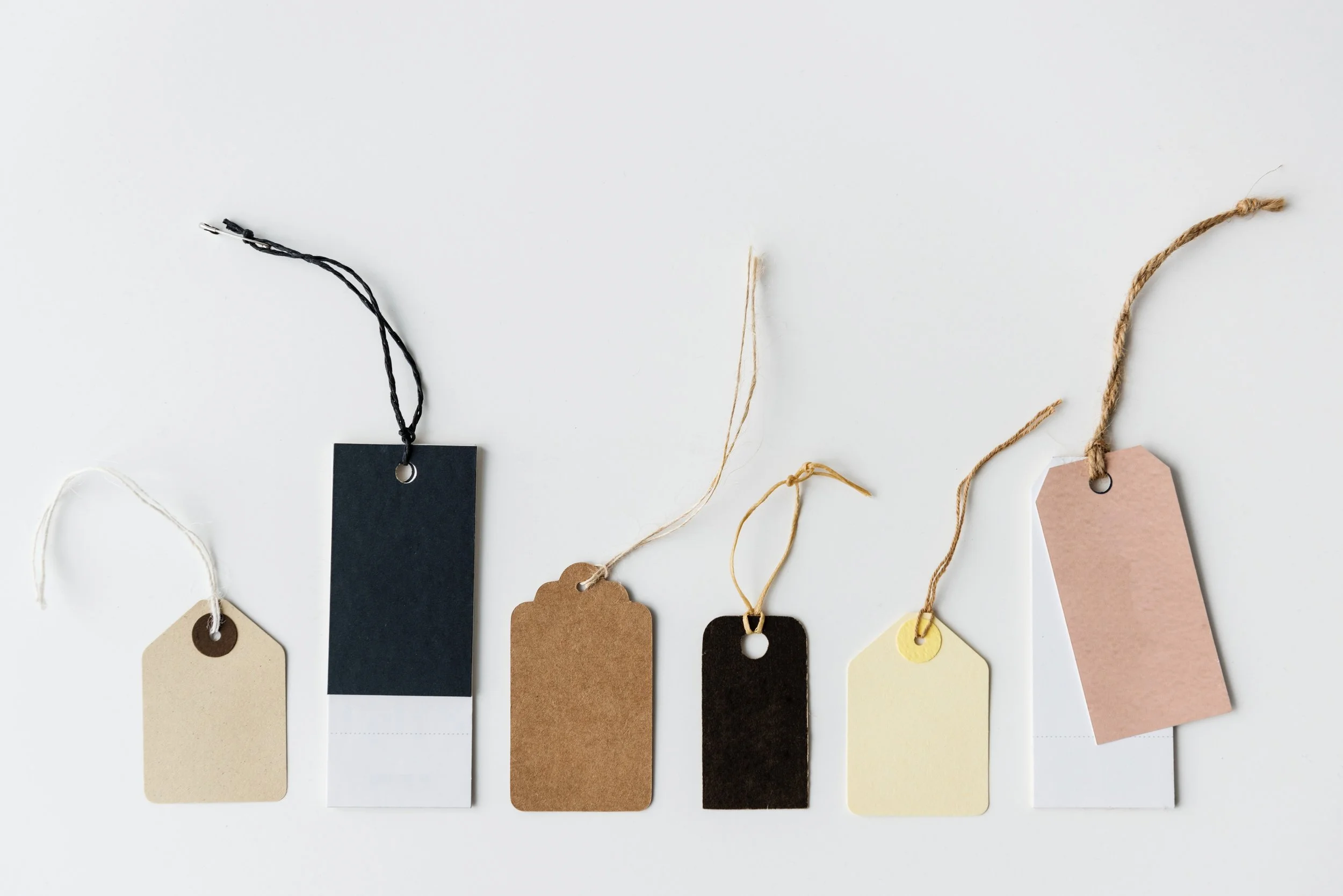Sustainable Packaging and Shipping Solutions
Businesses and Consumers should Seek Alternative Packaging and Shipping Methods
Honolulu's Single-Use Plastic Ban
In 2019, I helped a group of environmental nonprofits on Oahu fight for and ultimately pass Hawaii's first ban on single-use plastic items. At the time, it was one of the most comprehensive bans in the country, and since then, other islands and states have borrowed this language to pass similar legislation.
The Greatest Contribution to Single-Use Plastic
Through this process, I learned that packaging was the most significant contributor to single-use plastic worldwide, and my first thought was GREAT! My job focuses on helping businesses become more eco-friendly, and the companies buy the packaging and produce the packaging waste. As long as I can convince my clients to switch to alternative packaging and tags, my contribution to the global plastic problem has the potential to be significant!
Sustainable Alternatives to Plastic
Over the last few years, I have been learning more about packaging, and technological advancements have been vast and consistent. Companies like Sway have surfaced, making nurdles out of seaweed! There are countless biodegradable packaging options for mailers, alternative materials like sugar cane taking the place of hard plastic, and companies increasingly using recycled ocean plastics. These technology companies need recognition and funding to scale and, ideally, lower prices to more affordable levels.
The Plastics Industry
At this point, virgin plastics (100% new petroleum plastics) are still the cheapest option. As more consumers seek out green transportation methods, the oil industry is desperately trying to increase plastic production by slashing prices further.
As consumers, having this background knowledge of the plastics industry and understanding the dedication it takes for businesses to elect non-plastic packaging is essential. We need to support those businesses so that they can grow and order large quantities of their packaging materials so that the wholesale and retail prices can come down.
Sustainable Package Options
Non-Plastic, Eco-Friendly Packaging Options
1) Biodegradable packaging is an excellent alternative to traditional packaging choices because it is made of materials that can decompose without any required conditions. Cellulose-based packaging is a superb option if you want clear packaging. Evocative designs specialize in biodegradable containers made from mushrooms!
2) Compostable materials, which you see most frequently, require a certain level of heat and containment to break down, and most consumers do not have access to the necessary conditions to compost manufactured materials.
3) Aluminum has the highest recycling percentage because it is more cost-effective than sourcing virgin aluminum. However, sites like Greenbiz explain that there may be more "trade-offs in transportation emissions" because many communities do not have a recycling center.
4) Glass is expensive to make, ship, and recycle, but it is also infinitely reusable, stylish, transparent, and will not rust or degrade when exposed to different elements. If your business is local and liquid-based and you have options for customer return, go this route!
5) Reusable materials are designed to be reused and are the only way to decrease total waste produced. Ensure you have simple solutions for your customers to make a reuse program effective. The Reusable Packaging Association offers different types of eco-conscious, reusable packaging options for all your needs. Loop is an example of an industry creating a large-scale reuse system—this global platform partners with brands and manufacturers to offer refillable alternatives to single-use products.
Sustainable Shipping and Packaging
Once you figure out what to put your product in, the next step is how to get it to your customers. With digital shopping, mainly from a cellphone, now the primary way consumers shop, it's essential to integrate eco-friendly shipping options into the sales platforms on your website, Instagram page, and Facebook page. Shipping has a large carbon footprint- regardless of the size- if the distance is significant.
PlanIt is headquartered in Hawaii, where we sadly import around 98% of what we consume, and these imports arrive by plane or shipping vessel. The carbon footprint affiliated with consumption in Hawaii is massive and one of the highest in the world. This knowledge is part of the reason we work so hard to uplift and grow local businesses and always encourage people to buy locally!
Carbon Fees for Shipping Products Sustainably
Like product packing- the world of sustainable shipping has evolved even faster. There are countless ways that your customers can opt-in to offset the carbon emissions associated with shipping their purchase and brands that even require a carbon fee for all shipping! These eco-friendly strategies allow customers to be a part of the solution, and just as their purchase might benefit someone or something in need, the carbon fee for shipping is another chance for customers to contribute to a social or environmental cause.
Sustainable Shipping Carriers:
The environmental trend is so widespread that shipping carriers have even created programs to decrease their impact and allow customers to be part of the solution again. Businesses can choose to take on this fee or include it in their customers' product fees.
USPS Eco-Friendly Services
The United States Postal Service (USPS) offers several eco-friendly shipping options, including its "BlueEarth" program, which focuses on reducing shipping's environmental impact.
DHL GoGreen
DHL offers a "GoGreen" service that allows businesses to reduce and offset their carbon footprint through various environmental initiatives.
UPS Carbon Neutral
UPS offers a carbon-neutral shipping option, which allows them to calculate and offset the emissions from your shipments.
Sustainable Shipping Package Options
For businesses looking to ship sustainably, the first thing to consider is the amount of packaging used to ship that item. How can you reduce the total amount used and the size of the package in general? Waste is waste, so decreasing the total amount decreases not only your environmental impact but also your shipping fees and the fees associated with buying the packaging materials in the first place.
A wide range of sustainable shipping options are available based on your needs.
Consider plant-based packing peanuts to replace foam packing peanuts (for padding)
Consider biodegradable padded envelopes to replace plastic padded envelopes (for smaller items). Tamga Designs uses compostable, cassava-based packaging for their items.
Try biodegradable plant-based plastics that dissolve in water to replace plastic bags (for items that might need a bag to keep it tidy and compact)
Look into recycled cardboard, denim, and other upcycled solutions for padding items in a box to replace bubble wrap.
IPC Pack is an excellent option for recyclable, insulated box liners for cold insulation. They offer several different options for environmentally friendly box liners.
Check out Elevate Packaging to view compostable shipping pouches, stickers, and labels! They also have a section where you can contact them about specific products. Sunbasket is an excellent example of a small business using eco-friendly shipping options for meal service kits. They give their customers the option to choose which type of package stuffing they prefer, coupled with education on best practices for disposing of or reusing that packaging.
Product Labels
Think beyond the package and the padding to consider the physical labels themselves! Traditionally, labels are plastic-based, contain toxic dyes, and have plastic-based adhesives. Multiple companies have created eco-friendly labels and stickers that are biodegradable or compostable and made with plant-based adhesive, waterless dye, and plant-based dyes to combat this.
When selecting labels, think about how to decrease your impact even further: If you are using a glass jar, how can you choose a label that is easily removable so that the jar can be reused by your customer or returned and reused by your business?
Purelabel is a company that produces compostable, sugarcane-based labels. It also uses compostable adhesive to keep the labels in place!
Sustainable Options for Product Tags
Flower Tags
Now, multiple paper companies make handmade paper tags inlaid with different seeds so that you can plant the paper to grow flowers or herbs when you remove the tag.
2) Botanical Paperworks
Swap out the plastic tag attachment! Attach tags to your clothing with hemp twine, cotton string, or safety pins. Sustainable alternatives to the sewn-in tags that display materials and product care instructions are also available.
Kraft Tags:
Kraft tags are usually printed on paper made from high-quality wood pulp chemically treated in a process called grafting. These tags are one of the more popular eco-friendly options and can be very affordable, depending on where you order them.
Biodegradable tags
Similar to biodegradable packaging, these tags will break down in the trash.
1) Weavable
3) EE Labels
4) Tuniq
Making Sustainable Selections
When we choose to become more environmentally conscious in our businesses, it truly is a marathon, not a sprint. It takes time to cultivate the proper materials and resources to ensure that your product is sustainably created and received.
Here at PlanIt, we help you seamlessly move from point A to Z, offering a variety of options for your business based on budget, need, and size.
Want to make your Business more Sustainable?
Contact us today to schedule a free discovery call!






